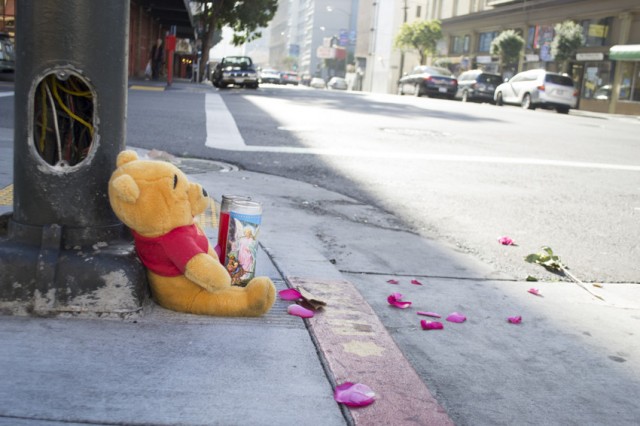Interestingly, we notice spiking right now in terms of web traffic: our investigation into the insurance issues for ride-service drivers like the one from UberX. TNCs are now required to offer $1 million per incident liability insurance policies, but one assumption might be those would not apply to a driver operating his vehicle for personal use. Complicating matters: the insurance industry says that in order to be covered, any driver using his vehicle for TNC work must buy commercial insurance, even when on personal time.
Of course, insurance may be the least of Muzzafar’s problems. Sheriff’s spokeswoman Susan Fahey said he was booked into custody early Wednesday morning and was released after posting bail at about 11 p.m.
The San Francisco cab industry, which has been losing customers to TNCs like UberX and opposes the CPUC’s decision to legalize them, has argued that the public is at risk as an influx of new quasi-professional drivers has hit the road. The CPUC’s decision requires TNCs to comply with the following safety standards:
- TNCs shall obtain each TNC driver’s driving record before the driver begins providing service and quarterly thereafter.Drivers with convictions for reckless driving, driving under the influence, hit and run, or driving with a suspended or revoked license shall not be permitted to be a TNC driver.
- Drivers may have a maximum of two points on their driving records for lesser offenses, e.g., equipment problems, speeding, or child safety seat violations. TNCs shall establish a driver training program to ensure that all drivers are safely operating the vehicle prior to the driver being able to offer service. This program must be filed with the Commission within 45 days of the adoption of this decision. TNCs must report to the Commission on an annual basis the number of drivers that became eligible and completed the course
But Hansu Kim, owner of San Francisco’s DeSoto Cab and a board member of the Taxicab Paratransit Association of California, told KQED that ride-service companies “have skirted all the rules that have applied to safety and that have been in place for decades. Sadly, I predict there will be more tragedies until regulators wake up.”
Meanwhile, in another fatal pedestrian accident earlier Tuesday, 86-year-old Zhen Guang Ng was struck at about 3:30 p.m. at Naples and Rolph streets in the city’s Crocker-Amazon neighborhood. He was taken to San Francisco General Hospital, where he was pronounced dead, police said.
Giampaolo Boschetti, a 69-year-old San Francisco resident, was arrested following the collision and was booked into custody on suspicion of vehicular manslaughter with gross negligence and failure to stop at a stop sign, police said.
Fahey said Boschetti was released early Wednesday morning after also posting bail.
The Examiner has put up a story up on the rise of pedestrian fatalities in the city:
The two deaths on the last day of 2013 brought the pedestrian fatality count to 20 for the year, according to Walk San Francisco, the highest number since 24 were killed six years ago.
“It’s a new year with all the sadness, a wake-up call to The City that we need to prioritize pedestrian safety,” said Walk SF Executive Director Nicole Schneider. “Twenty people dying last year alone should be a cause for concern that this is a public health and public safety crisis that The City needs to take responsibility for.”
Pedestrian fatalities in 2013 surged from the previous five years, which saw between 13 and 17 each year, despite a pedestrian strategy released early last year. The Police Department had also launched a campaign in late 2012 focusing on the five leading causes of collisions.
Update: Two more San Francisco pedestrians, one on Thursday evening and one on Friday morning, have been injured after being struck by cars. The Contra Costa Times reported yesterday that a man hit Thursday at Bush and Leavenworth is “fighting for his life.” Details on the other accident have not been made public.
Interview: Walk San Francisco director Nicole Schneider on pedestrian safety









